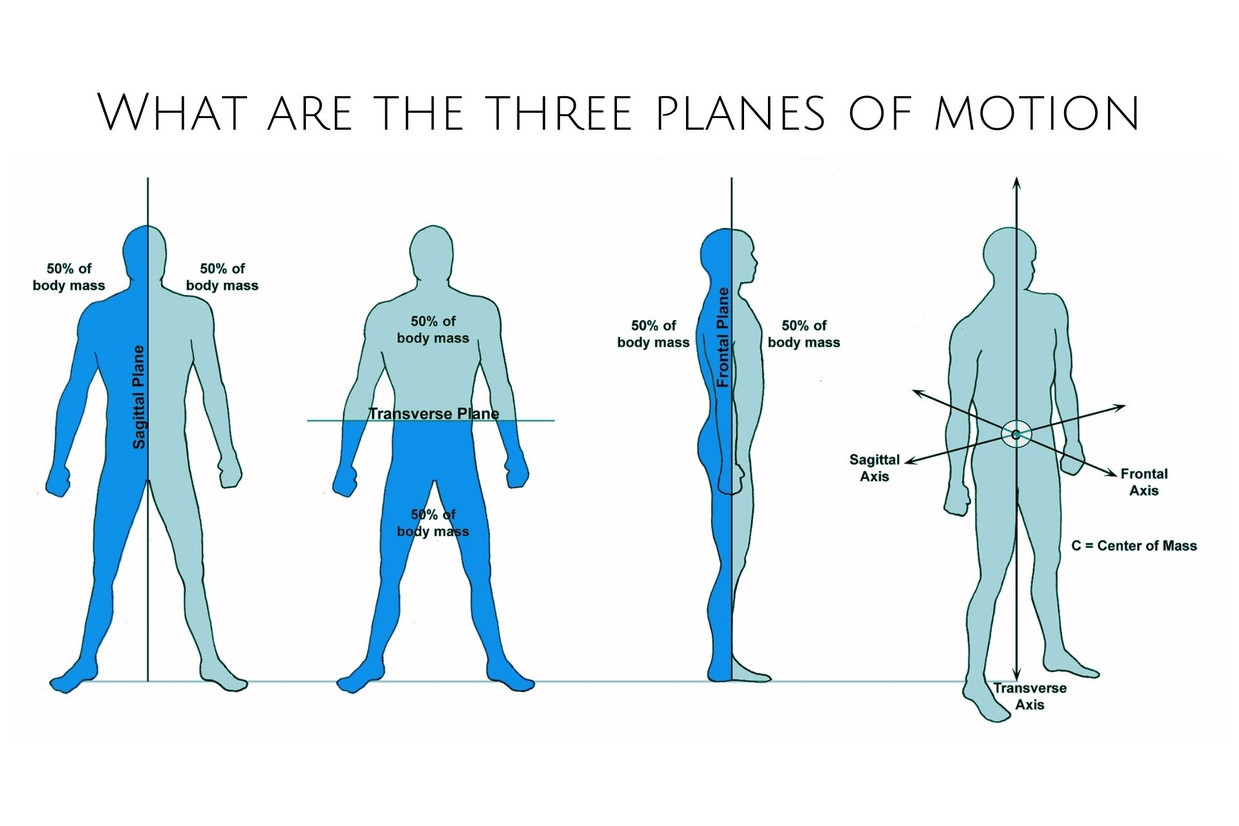What are the three planes of motion
Understanding your body’s three planes of motion will help you plan your fitness regime to maximize the results and reduce any risk of injuries in your body.
Every three out of five people you meet have an exercise routine. Be it working out in the gym with equipment or at home; everyone tries to do their bit to reach a fitness goal. So, is it essential to understand our body and how it moves, even for someone who is not a professional trainer or bodybuilder?
Well, the answer is yes. Of course, not in-depth but straightforward knowledge of something as basic and essential as three planes of motion will positively change your view towards exercise. So, what are three planes of motion? Let’s imagine a line on the human body in an anatomical position. Now this line dividing the body into different segments highlights the three planes of motion.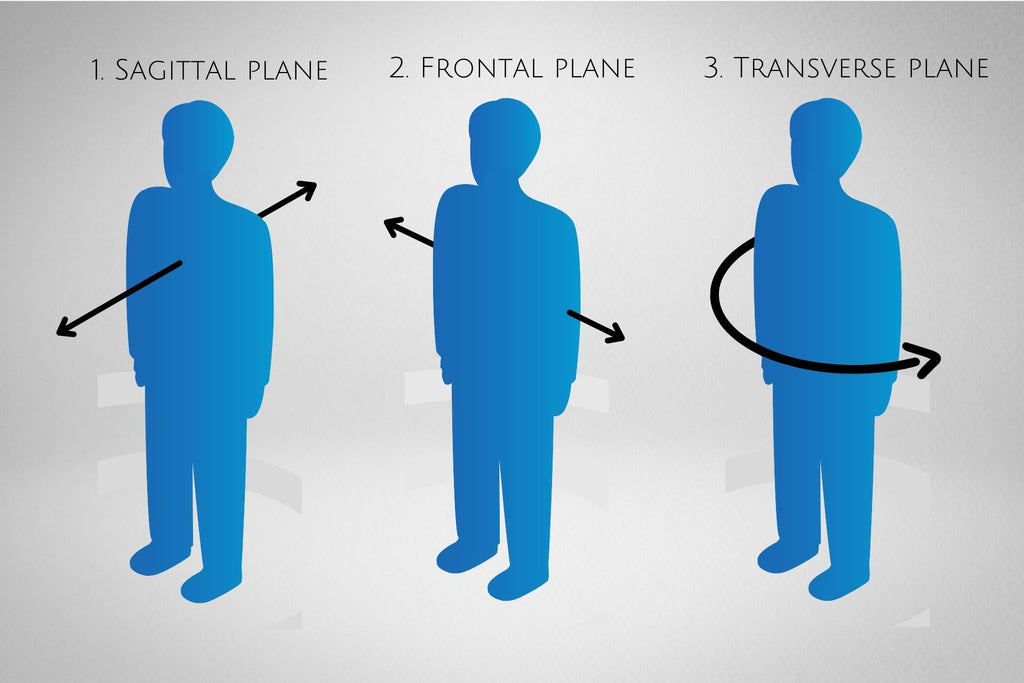
- Sagittal plane – divides the human body’s right and left sections symmetrically.
- Frontal plane – divides the front and back segments of the body.
- Transverse plane – divides the top and bottom segments of the human body.
Let’s understand each of these three planes of motion in depth with examples. To understand our body's movements, we should recognise the movement is parallel to which of these three planes of motion.
Let’s imagine the sagittal plane’s imaginary line on our body. Now think about you climbing upstairs. The movement of your body parts is accurately parallel with the imaginary line.
Similarly, let's say you are exhausted from climbing the stairs, so you stop and hold the railing on sideways, catching your breath. This movement is parallel with the line of the frontal plane.
Say that's when a friend is calling your name from behind, and you look behind at them, you do a movement parallel with the line dividing your body separating the top and bottom sections, I.e. transverse plane.
It cannot be the only way the three planes of motion work. It can be only a single or even multiple planes of motion in action.
Let's shed some light on day to day activities, and the movements of it occur in which of the three planes of motion.
- Sagittal plane – Simple tasks like walking, typing on a computer or laptop, texting on your phone all occur in the sagittal plane of motion.
- Frontal plane – The motions of this plane occur rarely compared to the sagittal plane. Examples could be walking sideways, grabbing something from the side, etc.
- Transverse plane – Again motions that are not very common as these include rotational movements. Swinging a bat, hitting a golf ball can be some examples.
Considering none of us are very keen to understand the human body's anatomy, let's keep the in-depth medical information short. But to understand the three planes of motion, understanding the movements occurring in them is crucial. Let’s look at a list of movements possible in the three planes of motion –
Sagittal plane movements –
- Flexion – Bending movement, decreasing the joint angle.
- Extension – An extending movement increasing the joint angle.
- Hypertension – Beyond the neutral extension of the joint.
- Dorsiflexion – The movement of the foot towards the shin by bending the ankle
- Plantarflexion – Pushing feet away from the body.
Frontal plane movements –
- Abduction – The movement of moving away from the body's midline
- Adduction – Moving close to the body’s midline.
- Elevation – The movement of shoulder blades in an upward direction
- Depression- The movement of the shoulder blades in the downward direction
- Eversion – The movement of foot rolled towards the inside.
- Inversion – The movement of foot rolled towards the outside.
Transverse plane movements –
- Rotation – Torso or limb moving around the vertical axis.
- Pronation – The movement of the foot or forearm palm/foot – side down position in the rotation.
- Supination – Rotation movement in palm/foot – side up position.
- Horizontal abduction – Moving the arm in 90 degrees elevation away from the body.
- Horizontal adduction – When elevated at 90 degrees moving arm close to the body
Getting started
- Understanding the three planes of motion and incorporating them into your daily exercise routine is very different. We may understand the concepts but tell which movement falls under which of three planes of motion is difficult. Even exercise apps or even some trainers cannot tell the difference in movement's plane of motion. So how do you, as a beginner, start incorporating it?
- Start with simply moving your body in more diverse ways, moving it in different ways and positions. Think of your daily exercise routine and imagine performing each exercise differently.
- For example, along with walking lunges, try adding side shuffles, add a side step on a platform to your basic bicep curl, etc. These simple changes will help you in the initial stages of incorporating the three planes of motion in your training regime.
Benefits of three planes of motion training
There are several benefits of training in the three planes of motion. Here let's look at the top three reasons you should start working on it today.
Improves body’s performance in daily life
We may not recognize, but most times, we do not make movements in sync with the three planes of motion, resulting in pain and injuries. Undertaking compound exercises train multiple muscles in multiple planes. It will drastically improve your body's performance while doing basic daily life activities, which will, in return, lead to a healthy body.
Getting ready for sports
Yes, not all of us are professional athletes. But our body needs athletic movements to strengthen and stay fit. Complex movements in multiple planes of motion prepare us for safe and effective sports performance.
The variety of movements
We often unknowingly tend to undertake movements under one plane of motion. It makes our movements and body rigid. Training in the three planes of motion enables the body to move in various planes and movements, making the body effective and fit. Training your body to move in different directions, different ways with multiple exercises and equipment is necessary.
Determining your exercise’s plane of motion
Remember the imaginary line we discussed earlier. You need to think in terms of that while performing every exercise. The exercise is parallel to which imaginary line will determine the plane of motion for it. You can also compare it to the daily activities we perform in each of the three planes of motion to determine this. Well, once you learn to determine it, training yourself in the three planes of motion is pretty straightforward.
Let's look at some exercises that fall under each of the planes of motions. You can plan and build your workout regime considering and combining these exercises for a diverse exercise. Remember, if you are confused about how it will work or what combinations are correct, make sure to consult a professional trainer.
Exercises for the sagittal plane –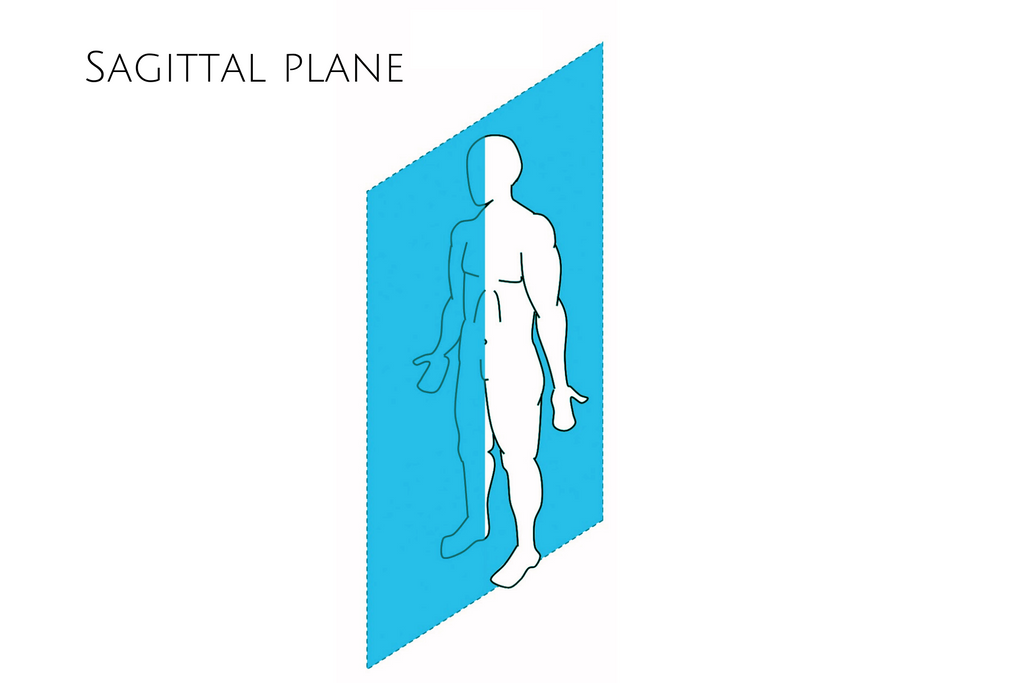
- The classic back squat – This exercise has motions of flexion and extension where everything above the waist is in motion. Here what determines the sagittal plane is the knees and hips being parallel to the sagittal plane's imaginary line. There are not side movements.
- The bicep curl – It is a common exercise of the sagittal plane. In this exercise, the arms, elbow, wrist, hip and ankle are in sync with the imaginary line.
- The old school walking/running- as we discussed, one of the daily life activities in this plane is walking or running.
- Climbing stairs – Another exercise that is part of our daily activities is climbing stairs—a classic example of movement in the sagittal plane of motion.
Exercises for the frontal plane –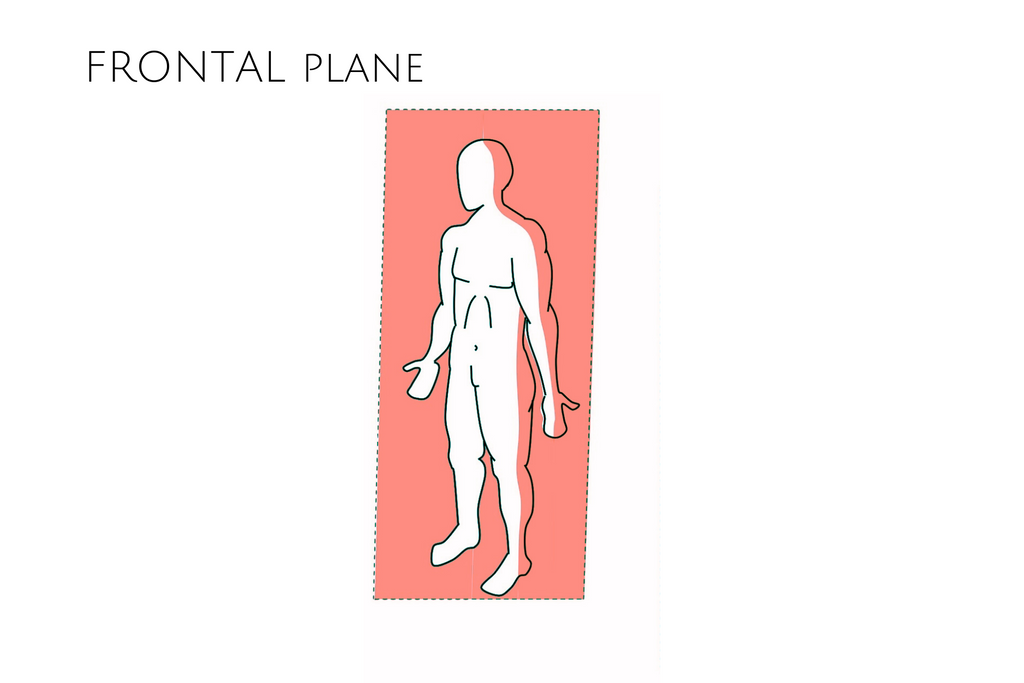
- Side shuffles – Easy and straightforward exercise presenting the movement of the frontal plane perfectly.
- The lateral arm and leg raise – Because the only motion allowed for the body in this plane is sideways lateral arm and leg raise is one of the effective exercises.
- Side bend – The warm-up exercise of bending towards each side of the body is good for flexibility and stretching.
- The inversion and eversion of exercises – It is one of the most confusing movements to understand. When we swing the foot like a pendulum away, and close to the body, eversion and inversion are performed, respectively.
Exercises for the transverse plane –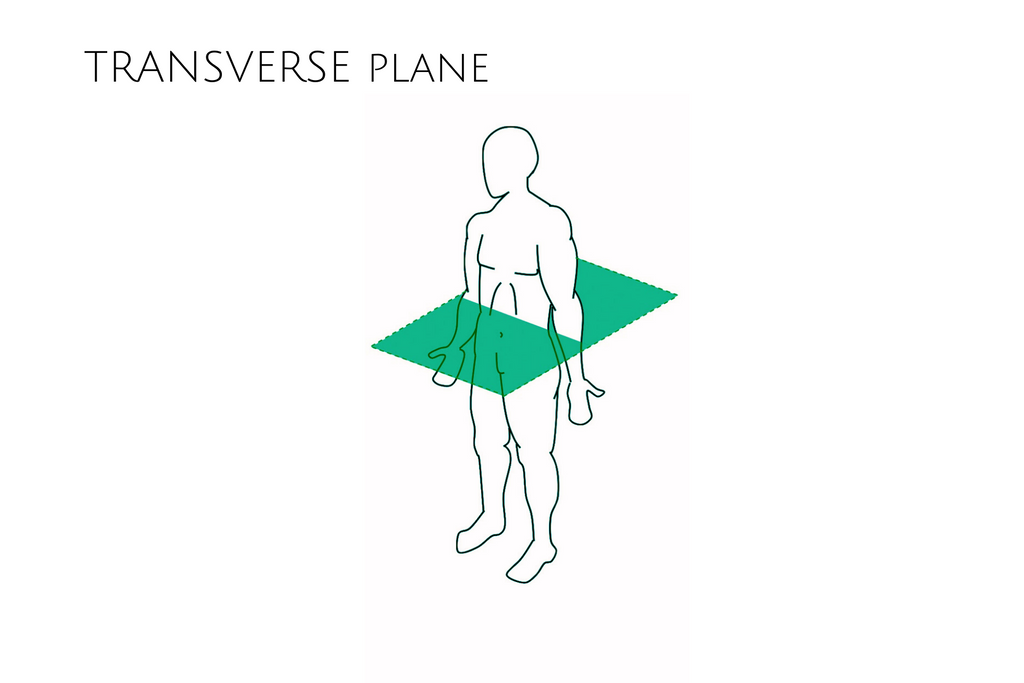
- Spinal rotation – In this plane, the imaginary line divides the top and bottom of the body, so the classic example is spinal rotation exercise, which, if you imagine, will realise is parallel with the horizontal line.
- Limb rotation - Even though they do not follow the rule of being parallel to the imaginary line, this movement is still considered transverse plane motion.
- Shoulder and hip movement – Remember when only arms and legs are elevated at 90 degrees and brought close to or away from the body, the movement falls under the transverse plane. These are one of the most common warm exercises that most of us follow.
We hope you have got an understanding of the three planes of motion. Remember that performing exercises of each of these three planes of motion is not enough. What benefits you the most is the combination movements, complex and compound exercises which helps the body use all three planes of motion. Remember, we live in a three-dimensional world, and it is no fun without actually using all three planes of motion.
So get your gear ready, pick your favourite exercises from each plane, speak with your trainer for combination tips and plan your 3D work routine today!!
Recent Posts
-
The Science Behind Boswellia Extract: How It Works in the Body
Boswellia serrata, also known as frankincense, is a resin obtained from the Boswellia tree that has
-
The Role of Un-Natured Protein in Enhancing Detoxification
While the human body is well-equipped with a detoxification system—primarily managed by the liver, k
-
The Role of the HOMA Test in Assessing Metabolic Health
In today’s fast-paced world, where health conditions such as Type 2 diabetes, obesity, and metabolic

